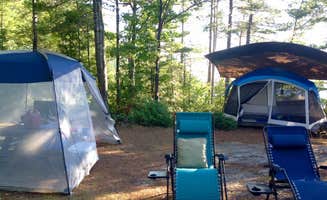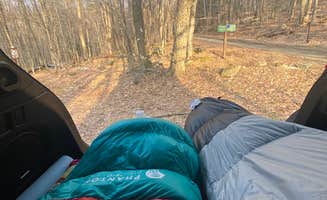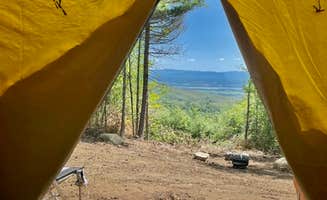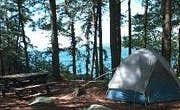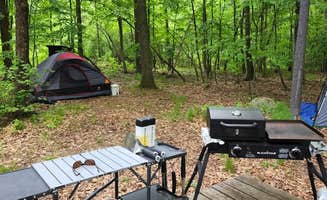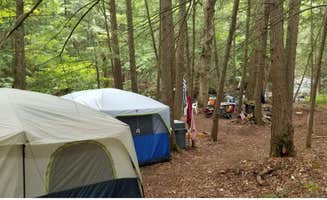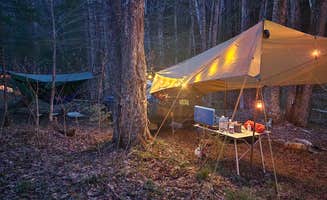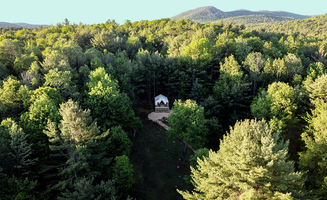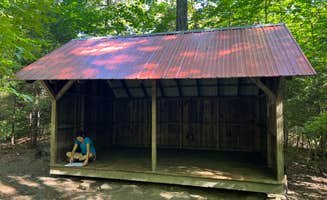Tent camping near Castleton, Vermont centers around the Green Mountain National Forest, where campsites range from 1,200 to 2,500 feet elevation. The region features several primitive sites along forest service roads with creek access, mostly operating from late April through October depending on snow conditions and mud season. Roads often become impassable during spring thaw when temperatures fluctuate between freezing at night and warmer daytime conditions.
What to do
Swimming opportunities: Multiple water access points exist at Michigan Brook Road Camping - Green Mtn Ntnl Forest, located 15 miles from Castleton. According to one camper, "Nice little spots to hangout all day. Lots to see, and explore." The brook provides natural swimming holes during summer months when water levels are suitable.
Hiking trails: The area offers connections to both short day hikes and longer backpacking routes. At Stony Brook Backcountry Shelter on the AT in Vermont, campers can access the Appalachian Trail system. As one hiker notes, "There was also a bear box here, which I hadn't seen at other shelters along the AT in Vermont," making it suitable for overnight trips with proper food storage.
Fishing access: Stream fishing for brook trout is available at several primitive sites. Michigan Brook offers easily accessible fishing spots that don't require long hikes. One visitor to the area explains, "Drive in about a mile after the parking lot!! Can use car to get in! There's 3 camping spots. 1 before the bridge and 2 after the bridge!"
What campers like
Proximity to towns: Despite the rustic setting, many sites provide reasonable access to supplies. One camper at Michigan Brook notes it's a "Decent Stop over spot for visiting Killington," making it convenient for day trips to nearby attractions while maintaining a wilderness experience.
Affordability: Free dispersed camping is available throughout the region with established fire rings but minimal facilities. A camper at Last light on Michigan Brook shares, "Love this site! The very last spot on the right hand side. If you've reached the closed gate you've missed the site! Keep it clean!"
Privacy options: Many sites offer seclusion despite proximity to one another. The region has numerous pull-offs and small clearings providing separation between camping parties. One camper reports finding "most of the spots to be on the road before the GPS marker. Few nice ones near the creek. I stayed at one on top of a hill—lots of space at mine."
What you should know
Road conditions vary: Forest service roads frequently become rutted and difficult after rainfall. A visitor to Bingo reports, "Couple of spots along the forest access road. Beautiful stream close by," but road quality requires careful driving, especially in spring and after heavy rain.
Cell service limitations: Most forest camping areas have no reliable connectivity. A camper states, "This location does not provide cell phone service or wifi connection. However, if you walk to the end of upper Michigan Brook road you will have cell phone service."
Water sources need treatment: Streams and brooks require proper filtration or treatment before consumption. No developed water sources exist at dispersed sites. When staying at backcountry shelters, campers note that water sources can be "unreliable" depending on recent rainfall and seasonal variations.
Tips for camping with families
Shelter options: For families seeking more structure, consider shelters rather than completely dispersed sites. Little Rock Pond Group Camp & Shelters offers a combination of tent platforms and three-walled structures that provide protection from elements while maintaining the outdoor experience.
Swimming holes for children: Look for camping locations with gentle water access. Several sites along Michigan Brook feature shallow areas suitable for younger swimmers during summer months when water levels are appropriate.
Supply planning: No reliable stores exist near most camping areas. One camper advises bringing "everything you need including extra ice" when heading to remote sites, as resupply requires significant driving to reach towns with services.
Tips from RVers
Size restrictions: Most forest roads have limited clearance and turning radius for larger vehicles. One Michigan Brook Road camper advises, "Beware that in Spring the road gets muddy and quite rutted, I would not recommend driving down there with a car that is low to the ground." This applies even more significantly to RVs and trailers.
Bridge weight limits: Several camping areas require crossing small bridges with weight restrictions. Check forest service information before attempting access with heavy vehicles, as some bridges cannot support larger RVs.
Leveling challenges: Bring substantial leveling blocks as most sites feature uneven terrain. A camper notes most dispersed sites have "no leveled space whatsoever," requiring proper equipment to stabilize vehicles on sloped or uneven ground.


